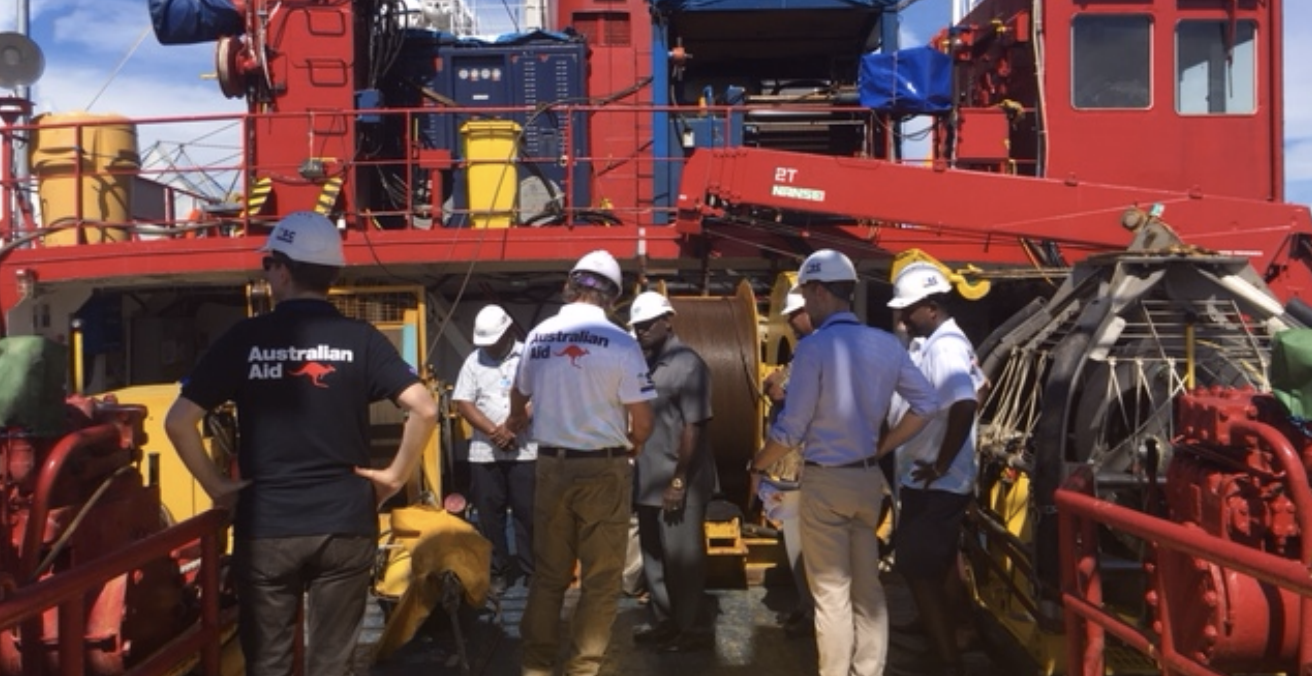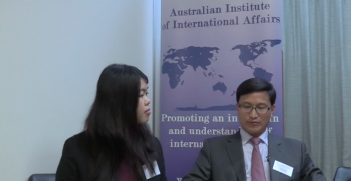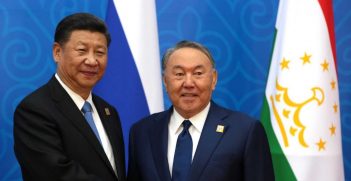Diversifying Australia’s Indo-Pacific Infrastructure Diplomacy

Australia’s Indo-Pacific infrastructure investment has seemed to be caught in a dilemma of choosing between the US and China. But the contemporary market for infrastructure and connectivity programs being put forth by governments in the region presents significant opportunities for diversification.
Infrastructure is an emerging component of Australian diplomacy. In recent years, many infrastructure and connectivity (I&C) programs have been launched in the Indo-Pacific, designed to close the “infrastructure gaps” that plague the region. Competition amongst these, particularly between US and Chinese offerings, has posed a dilemma for Australian foreign policy. Australia has struggled to articulate a policy on China’s Belt and Road Initiative (BRI) that balances strategic concerns against economic opportunities; while enthusiastic engagement with US alternatives risks perceptions of “choosing” sides between the region’s two main powers. Yet the contemporary marketplace for Indo-Pacific I&C is much broader, with programs recently launched by many governments and regional organisations. These present an opportunity for Australia to diversify its infrastructure diplomacy, particularly through engagement with the Asian Infrastructure Investment Bank, cooperation with Japan and new avenues for commercial diplomacy. By engaging with a wider range of I&C partners and institutions, Australia can better integrate itself with the emerging infrastructure systems of the Indo-Pacific.
Australia’s infrastructure dilemma
China’s BRI has proven a difficult challenge for Australia. Launched in 2013, the BRI aims to improve economic connectivity between China and its Eurasian and Pacific neighbours. It functions as a mobilising initiative, under which Chinese agencies (principally state-owned industrial enterprises and banks) provide loans and technical assistance for infrastructure projects in regional partners. Projects are usually negotiated on a bilateral basis between China and the host government. The BRI features both economic and strategic motives. Economically, it aims to develop China’s western provinces, encourage greater trade integration with contiguous partners, employ China’s massive foreign currency reserves and provide an outlet for surplus industrial capacity. Strategically, the BRI is designed to strengthen China’s political influence abroad, secure China’s energy supply, improve the country’s diplomatic image and increase its economic leverage over its neighbours.
While often welcomed by developing country governments with major infrastructure needs, the BRI has elicited mixed views in Australia. Its positives include the channeling of significant volumes of capital – estimated potentially as high as $1 trillion – to developmentally-important projects; and the opening of new trade and investment opportunities by improving transport and telecommunications links to key Australian economic partners. However, several concerns have been raised regarding the strategic implications of the BRI. These include:
- The limited transparency and minimal governance arrangements of SOE-managed projects, which may undermine “good governance” development financing;
- The prospect of “debt traps,” in which small economies are unable to fiscally-sustain repayments on large infrastructure loans;
- Security concerns surrounding several China-backed port projects with mixed civilian and military uses, such as Hambantota in Sri Lanka and Gwadar in Pakistan;
- Risks that infrastructure spending will be used to compete for geopolitical influence over small economies, particularly evident in emerging Australia-China rivalry in the South Pacific.
The Australian government has struggled to balance these competing concerns and develop a coherent position on the BRI. At times messaging has been positive, including the establishment of the Australia-China One Belt One Road Initiative (a business engagement NGO) in 2016, and official statements that Australia sees “much merit” and “opportunities for collaboration” in the BRI. But Chinese approaches to formally establish government-to-government mechanisms for infrastructure cooperation have been consistently rebuffed for strategic reasons. These include proposals to “link” the BRI with the Northern Australia Infrastructure Fund, or to sign a memorandum of understanding (MoU) on BRI cooperation with the Chinese government. Attitudes appear to have hardened in 2018 when then-Foreign Minister Julie Bishop publicly expressed concern BRI investments in the South Pacific would be “detrimental to [these countries’] long-term sovereignty.”
By contrast, Australia has been enthusiastic about collaborating with competing US infrastructure initiatives. At the July 2018 Australian-US Ministerial Consultations (AUSMIN), the Australian and US governments declared an intention to “advance a shared infrastructure agenda” in the Indo-Pacific. This was the first time bilateral infrastructure cooperation appeared on the AUSMIN agenda. A trilateral infrastructure cooperation MoU between Australia, the US and Japan was announced later in the month. These agreements leverage recent reforms to the US development assistance program, which establish a new International Development Finance Corporation (IDFC) with an investment portfolio cap double that of its predecessor ($60 billion). While US-Australia statements do not explicitly reference either China or the BRI, their public framing – which emphasised transparency, sustainability, private-sector involvement and avoiding debt-burdens – were widely understood as offering an alternative I&C model to compete with the BRI.
This Australian position – of endorsing a potential US initiative, while declining an MoU with an established and considerably larger Chinese one – has proven controversial. At a political level, it is easily interpretable as Australia “choosing” the United States over China as an infrastructure partner, with attendant consequences for the Chinese bilateral relationship. At the economic level, it is not without risk either. A significant number of major businesses are in favour of engaging with the BRI, lest Australia is excluded from the new market opportunities in the region it is creating. In October 2018, the Victorian Government took the bold step of negotiating its own BRI MoU with China, which led to a public rebuke by the Prime Minister for not consulting with the Commonwealth prior. There have also been reports of an intra-governmental split at the federal level, with the trade and economic groups supportive but the security community opposed. Thus, while BRI engagement is demonstrably a strategic risk for Australia, non-engagement is an equally significant economic one.
The Indo-Pacific infrastructure and connectivity landscape
The focus on Chinese and US initiatives in debates over Australian infrastructure diplomacy is perplexing, as there is actually a broader set of programs active in the region. In the last few years, many governments and regional organisations have established new, or reinvigorated existing, I&C programs. The majority were launched since 2013, and the collective budget for those that allocate investment capital is approximately $1.5 trillion. They can be classified into three types:
(1) National programs, where a donor state commits financial and technical assistance to support infrastructure projects in recipients bilaterally via aid programs and/or foreign direct investment.
(2) Multilateral development banks (MDBs), which offer loans and technical assistance to projects that meet specified funding criteria.
(3) Regulatory dialogues, which do not offer capital but instead focus on inter-governmental cooperation to reduce regulatory barriers to infrastructure projects.
A noteworthy feature of the I&C landscape is the diversity of governance models on offer. In terms of modalities, some support infrastructure by offering financial and technical support, while others instead target regulatory harmonisation. Architecturally, the national programs employ a bilateral model where projects are negotiated between donor and recipient, while the MDBs and regulatory dialogues use multilateralism to support cross-border infrastructure. On the question of public versus private entities, some largely rely on state financing (China’s BRI and the MDBs), others place a high priority on leveraging private capital (US IDFC, AFC) and others mix the two models (Japan’s PQI, MPAC). While all aim to close infrastructure gaps, they offer a variety of mechanisms and resources to do so. Governments in the Indo-Pacific now enjoy a diverse, and indeed somewhat crowded, marketplace for infrastructure cooperation.
The corollary is that these programs do not pose a stark either/or choice. The diversity of governance models means none are perfect substitutes for one another. Indeed, there is scope for a mutually-beneficial division of labour, which combines their various mechanisms into complete infrastructure development packages. Clear synergies exist between those with large pools of capital (BRI, PQI, IDFC and AIIB), those with in-house technical capacity and expertise (ADB, AFC) and those which provide dialogue mechanisms to facilitate inter-governmental cooperation (GMS, MPAC). The infrastructure choice is, therefore, one of efficient resource allocation, not picking winners. As I&C projects require both financial and political capital to succeed, they will be best achieved through approaches that combine institutional solutions.
Diversifying Australia’s infrastructure diplomacy
The rich landscape of Indo-Pacific I&C programs suggests the Australian policy calculus should be considerably wider than a choice between Chinese and US offerings. The alternatives offer attractive opportunities for infrastructure diplomacy. Some align well with Australia’s agenda to support a rules-based order in the Indo-Pacific, particularly given the multilateral architecture of the MDBs and regulatory dialogues. Multilateral programs are also less geopolitically-charged than the bilateral Chinese and US initiatives and offer a way to operate in the infrastructure space without perceptions of “choosing” between the region’s great powers. That these programs have not been a focus of recent Australian foreign policy – none but the AIIB and BRI are explicitly named in the 2017 Foreign Policy White Paper – is a missed opportunity. There are several steps Australia can take now to diversify its infrastructure diplomacy.
First, Australia should leverage its founding membership of the newly-established AIIB. Australia played a key role during institutional negotiations in 2015 to ensure the bank embodied international best practices for development financing. As a result, the AIIB has a well-developed set of loan policies that embody international best practices for development financing, and it closely cooperates with other MDBs through information-sharing and joint-venture arrangements. Australia should make the most of these governance efforts, and its $3.7 billion capital subscription, to use the AIIB as an institutional vehicle for its infrastructure diplomacy. These efforts should focus on countries with which Australia has important economic ties, such as Indonesia, Vietnam and India. Working through the AIIB also has the benefit of engaging with a China-led infrastructure initiative whose multilateral architecture avoids some of the geopolitical issues surrounding the BRI.
Second, Australia should make infrastructure a priority area for bilateral cooperation with Japan. Though launched in May 2015, Japan’s PQI had gone practically unnoticed in Australia until an MoU was signed with the Nippon Export and Investment Insurance (a state-owned insurance corporation) in November 2018. This agreement, which enables information sharing to identify projects in the region on which Australian and Japanese companies can partner, provides an initial framework for bilateral infrastructure cooperation. However, there is scope for broader cooperation beyond investment underwriting. Particular opportunities exist in aid collaboration, which could be developed between Australian Aid and the Japan International Cooperation Agency. Given the $200 billion of capital allocated to the PQI, and its “good governance” alignment with Australian priorities, it offers major opportunities to scale up infrastructure diplomacy with a partner that shares Australian objectives and values.
Finally, Australia can creatively support I&C platforms via technical rather than capital contributions. While Australia’s fiscal capacity to invest in infrastructure projects is limited, relevant capacity in design, construction and management means Australian service and technology companies are well-placed to contribute in non-financing roles. Economic diplomacy that promotes Australian businesses’ entry into infrastructure projects – via outbound investment and services trade – would complement existing capacity building work within the aid program. Moreover, this could fruitfully be calibrated to connect to the regulatory dialogue processes. The MPAC program offers substantial opportunities given ASEAN’s importance as Australian trade partners, and could leverage connectivity work already underway within the ASEAN-Australia Development Cooperation Program. Such efforts would also broaden infrastructure diplomacy into the “business-to-business” domain, and ensure Australia is an active participant across the full-range of I&C initiatives in the Indo-Pacific today.
Dr Jeffrey Wilson is the research director at the Perth USAsia Centre. He specialises in the regional economic integration of the Indo-Pacific, with particular expertise in the politics of trade agreements, regional economic institutions and Australia’s economic ties with Asia. He has been featured in local and international media outlets, contributed to a range of track two dialogues between Australia and key regional partners, and supported policy development through consultancy, publication and advisory work. He tweets at @JDWilson08.
This is an extract of Wilson’s article in Volume 73, Issue 2 of the Australian Journal of International Affairs titled, “Diversifying Australia’s Indo-Pacific Infrastructure Diplomacy.” It is republished with permission.





